Swaziland History Facts and Timeline
(Swaziland, SZ, Southern Africa)
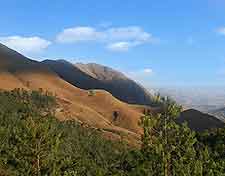
Home to just over one million people, Swaziland is one of the smallest countries in
Africa. However, the history of Swaziland is a long and proud one, with discovered artefacts dating back to the Stone Age.
Nowadays, the land is occupied by the Swazi people, whose southern Bantu ancestors first moved here from Central Africa during the 1400s and the 1500s. The country and its people are named after a former monarch, King Mswati II, and to this day the country remains one of the world's last absolute monarchies.
Early Tribes
The Bantu Migrations of the 1500s meant that the Khoisan tribes who had inhabited the lands for many centuries were eventually displaced. The Bantu brought superior technology with them, quickly establishing ironworks and farms to drive the local economy.
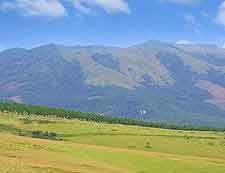
Although the current Swazi descend directly from the Bantu, it is difficult to say that there was much unity in these early days. Rival clans fought for control of the small kingdoms which once made up the current Swaziland, with the Dlamini clan and their Ngwane kingdom eventually taking control of many areas.
The Swazi National Museum in Lobamba is a good place to learn about the early culture and history of Swaziland, with its range of historical and archaeological artefacts. Alternatively, the Cultural Village located in the Mantenga Nature Reserve tells the Swazi story through traditional dance and offers a glimpse into the life of a typical Swazi homestead.
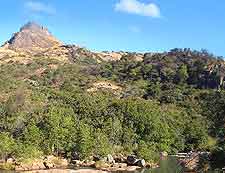
White Contact
The first British contact came shortly after King Mswati II came to the throne in the first quarter of the 19th century. Swaziland had come under repeated raids by the Zulus, and so Mswati II asked the British for assistance. It was around this time in Swaziland history that he also allowed the first whites to settle here, namely the Boers.
In 1881, the British signed over independence to the Swazi. However, this agreement didn't last long before Swaziland's rich land and minerals came to the attention of the increasingly influential South African Republic (Transvaal). By 1890, the country was completely under South African administration.
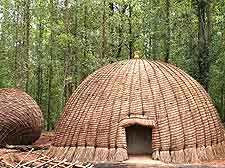
Anglo-Boer War
The Second Boer War (between 1899 and 1902) saw many white residents flee Swaziland for safer areas. Those who remained were drafted to fight against the British forces, while Swazi royalty tried to remain neutral early on in the conflict.
By the end of 1900, Swaziland was essentially operating as a British protectorate, although the British had vowed to keep their forces out, except in the case of an all-out invasion by the Boers. In early 1901, British forces were sent into Swaziland, as Boers attempted to flee through the country.
In conjunction with local Swazi militia, the British captured large numbers of fleeing Boers. The Swazi militia showed no mercy in their capture of Boer areas and as word spread of their atrocities, many other Boer groups were quick to surrender.
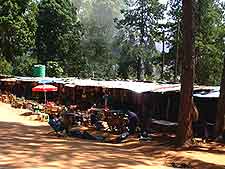
Post-Boer War and Independence
Despite the British and Swazi forces gaining control in early 1901, Boer forces were still active until February 1902, when their final regiment was defeated. The British colonial period then lasted from 1906 until as recently as 1968, with a resident commissioner making legislative decisions at a local level, alongside a Swazi monarch as the head of state.
Early on, the British expected Swaziland to be swallowed up by the new
South Africa, although the rise of apartheid meant that they had to prepare for independence. In the latter years of British rule, King Sobhuza II was allowed to have increasing influence and his political party, the Imbokodvo National Movement, enjoyed a significant landslide victory in the 1964 elections.
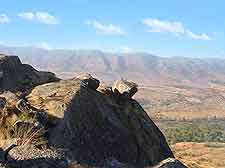
Post Independence History
Swaziland gained independence in 1968 and the first election following independence (1972) saw the rival Ngwane National Liberatory Congress gain just one-fifth of the vote. This was quite unacceptable to Sobhuza, who chose to ignore the results and restore an absolute monarchy to Swaziland.
More recent times have seen an increasing number of political reforms, and despite the presence of elected parliamentary representatives, it is the monarch who retains most of the real power in governing the country. The wealthy king is noted for having multiple wives in a country with an extremely high HIV rate alongside high poverty. Although bordering Mozambique, this landlocked country remains thoroughly dependent on South Africa and operates a micro-economy.
 Home to just over one million people, Swaziland is one of the smallest countries in Africa. However, the history of Swaziland is a long and proud one, with discovered artefacts dating back to the Stone Age.
Home to just over one million people, Swaziland is one of the smallest countries in Africa. However, the history of Swaziland is a long and proud one, with discovered artefacts dating back to the Stone Age. Although the current Swazi descend directly from the Bantu, it is difficult to say that there was much unity in these early days. Rival clans fought for control of the small kingdoms which once made up the current Swaziland, with the Dlamini clan and their Ngwane kingdom eventually taking control of many areas.
Although the current Swazi descend directly from the Bantu, it is difficult to say that there was much unity in these early days. Rival clans fought for control of the small kingdoms which once made up the current Swaziland, with the Dlamini clan and their Ngwane kingdom eventually taking control of many areas.


